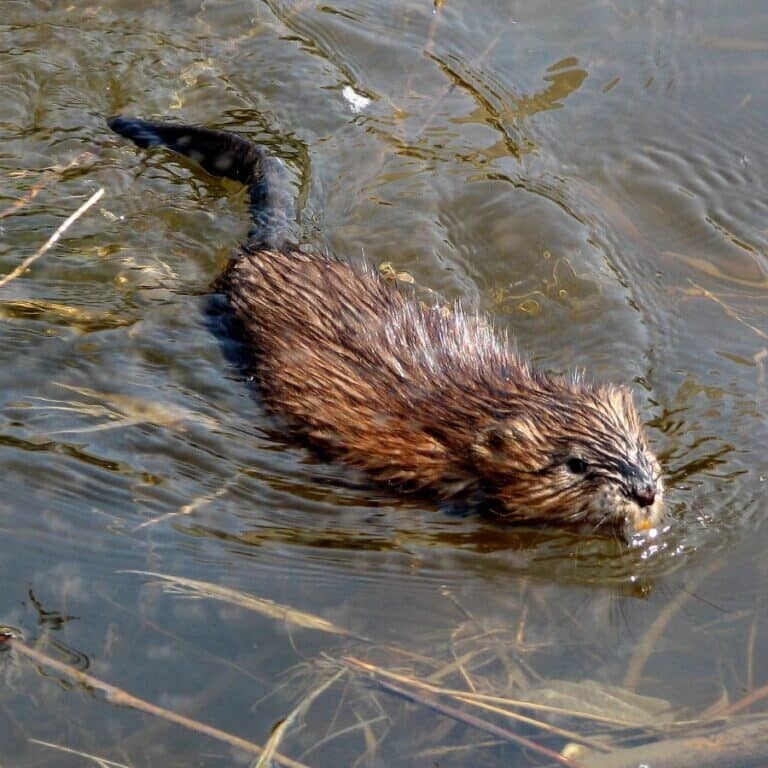Pond Predators
When managing a pond, it is important to be aware of the many residents that can call it home. Birds, fish, amphibians, and rodents will flock to a well-kept pond. There will also be predators playing their part in the pond’s balanced ecosystem. You should make sure to monitor them and decide if you need to take action should a certain predator species become too unbalancing. Below are a few of the most notorious pond predators.
Leech Control in Ponds
Leeches can harm a pond’s fish population if they become too numerous. They are also quite unsightly and often cited as being a reason why many people do not like to swim in ponds.
Leeches like to reproduce in the mucky bottom of the pond. For long term pond leech control, it is important to reduce the buildup of that muck. By using a product such as MuckMaid, you can help reduce the size of their breeding ground and limit their population growth. MuckMaid pellets are tossed into the pond every two to four weeks and will digest one to three inches of muck with each application.
For a quicker way to control a leech infestation in a pond, you can use a homemade baited trap. To do this, take a coffee can and puncture holes approximately one-eighth to one-fourth inch in size. Make sure that the sharp “burs” are pointed towards the inside of the can. (You do this by punching the holes on the outside of the can going in.)
The burs will prevent the leeches from leaving the can. Then, put some raw meat inside the can to bait the leeches. Replace the lid and submerge the can under water. Place a rock on top to keep the trap in place. You should check the trap daily and remove and destroy any contained leeches.
Another way to control leeches is the use of copper sulfate. When used at maximum label rates, it will kill the leeches and any other invertebrates in the treatment area at the time of application.
Pond Frog Control
A few frogs here and there are nice to have, but occasionally frog populations can get out of control. Though typically not thought of as predators, frogs can have a disruptive effect on a pond’s ecosystem in times where they have over-reproduced.
Frogs like to hide in emergent plants such as cattails. If you clear away large portions of cattails using Imox + surfactant, the frogs typically will disperse and move on to other areas better suited for their needs.
Another way to combat frog over-population is to introduce some bass in your pond. Bass will feed on the frogs as an additional source of food.
Pond Muskrat Control
If muskrats have made a home out of your pond, you may be experiencing some annoyances. Muskrats like to tunnel holes throughout the pond that can lower water levels. The most effective way to engage in pond muskrat control is to disrupt their diet. Muskrats like to eat aquatic vegetation such as cattails, water lilies, and other pond weeds. By reducing the number of weeds available to them, the muskrats will be forced to move on to another area that better suits their nutritional needs.
Herons in Ponds
Though majestic and beautiful, these birds are often dreaded by owners of fish ponds due to the bird’s ability to cause a case of “disappearing fish.” Herons are a protected species, so it is unlawful to capture or harm them in any way. Do not try to chase a heron out of your yard – these birds will readily attack when threatened and like to spear their adversaries between the eyes with their sharp bills.
There’s a reason why you will typically only ever see one heron in a pond at a time. These birds are notoriously territorial and will not feed where another heron is currently residing. Because of this, one control method is to put up a heron decoy in your pond. However, herons are smart birds and may figure out that the decoy is a fraud.
One option to try is to use a pond dye such as Reflection Black that will provide some cover for the fish. This way, the birds can’t see the fish and will move on.
Raccoons Near Ponds
Raccoons can be quite troublesome due to their destructive nature. They are nocturnal and will feed on fish in the shallower areas of your pond during the night. One method of controlling raccoons is to set out live traps to catch the animals so they can be transported to another area.
Snapping Turtles
Snapping turtles can be easily identified by their beak-like jaws and wavy looking shells. They are omnivores and opportunistic feeders; they will eat anything they can take a bite out of. Some options for snapping turtles include plants, insects, and fish (dead or alive).
It is not advised to approach or otherwise try to handle a snapping turtle. Their jaws are powerful enough to amputate a human finger, and their necks are long enough to bite hands holding their sides.
If you believe there is only a single snapping turtle in your pond, then the best option is to leave it alone. If you have many snapping turtles, call a professional animal remover to have them capture and relocate the turtles.
Conclusion
Whether the nuisance in your pond is a mass of leeches, frogs, or other animals that frequent the pond, deciding when to take control is the first step. After that, finding the best method of control that will lower the population of the nuisance as well as suit your needs is crucial. Continued monitoring of the pond will ensure those pond predators don’t take over.

